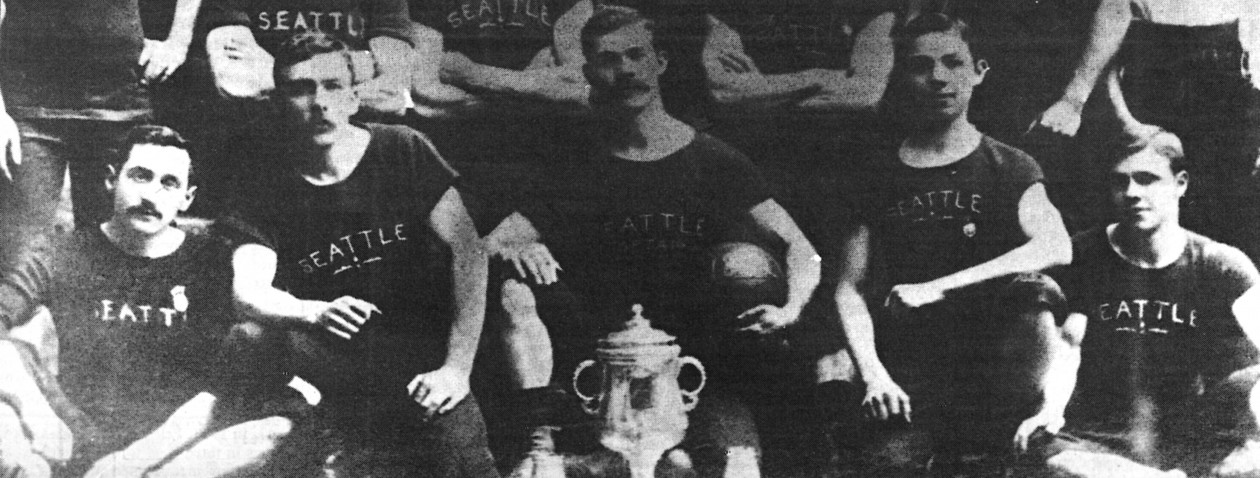
Going back 40 years, the role of Sounders team captain has been filled by both noteworthy legends and relatively obscure players. Disparate as they may be, these Seattle skippers share two qualities: unquestioned respect and a contagious competitive spirit.
Nowadays the captaincy carries with it a certain amount of pomp and fanfare. He wears the armband, leads the squad onto the field, calls coin-flips and, if the season ends well, lifts some silver skyward.
Back in the day of the NASL or A-League, when armbands were largely absent, identifying the captain from afar was mostly guesswork for fans. But being a captain isn’t about fanfare, and it’s far from symbolic. And it starts with fanning the flame inside the belly of every teammate.

If anyone could light a fire under an under-achieving side it was Jimmy Gabriel, the original Sounders’ first skipper. “The captain is like the manager being on the field,” says Gabriel. “He’s got to look it and say, ‘Hey, are we losing the grip on this game? Are we playing as well as we can?’
“A good captain passes a word to them, saying ‘Hey, let’s go. Let’s get this thing going,’” explains Gabriel. “There are guys like that, and you want them as your captain.”
Sigi Schmid has been coaching for 35 years and figures he’s used every method possible for picking a captain. At UCLA it may have been a team vote. More often, and particularly in the pros, Schmid has sought input from his staff and senior players. And at times he simply has it in his mind who best typifies the qualities of a captain.

“You really want somebody who you as a coach feel comfortable communicating with, someone who is going to represent the players well, who’s going to be open and honest,” says Schmid. “They need to be direct and not afraid to be confrontational.”
Schmid’s first selection for Sounders FC captain was Kasey Keller. Many managers believe a captain should be a veteran starter, someone to serve as the face and voice of the team, someone who’s held to a higher standard than the rest of the squad.
It was Keller’s second captaincy. He’d filled the bill earlier, at Germany’s Borussia Moenchengladbach. That came as a result of a team vote. No doubt they were impressed not only with his play in goal but also learning to speak fluent German.
“So much more of what I did as a captain was far more as club captain than captain on the day,” notes Keller. In Seattle, particularly in the club’s inaugural season, Keller and his wife, Kristin, helped get players and their families settled in a new environment. Beyond that, it was setting a standard of professionalism.

“You need to be on time, be ready to train hard every day,” he says. “But you’re also there to take responsibility and take some pressure off other people’s shoulders.”
For some players the captaincy may prove a burden. Neil Megson was captain for both the Tacoma Stars and A-League Sounders. Later, as Seattle coach, he shied from considering a goal scorer for the role. They’ve got enough on their mind, he says.
Some coaches hesitate to name goalkeepers. Reason: during a match they might be too far removed from an incident at the opposite end of the field. Keller never felt that was a hindrance. Whether at the back, up front or in the middle of the park, these are usually natural organizers.
Gabriel, Hinton, Megson and Bernie James are among the Sounders coaches who were once captains in Seattle or elsewhere. Interaction with players, the coaching staff and even ownership often fall to a captain and, notes Schmid, prerequisites of being a good coach.
Bestowing the captaincy can lift a player’s performance. No sooner did Alan Hinton take the Sounders coaching job than star midfielder Alan Hudson–“perhaps the best midfielder in NASL history,” says Hinton–issued a trade demand.

When standing captain Mike England retired to manage to Wales National Team, Hinton surprised Hudson, offering him the part. He accepted.
“Huddy was absolutely brilliant on the field, in the community and particularly in the locker room,” recalls Hinton. “He found a way to get along with everyone and make it happen, and we had the most successful season in NASL history.”
Oftentimes the captain is gregarious and outspoken, but occasionally there’s a quiet man who simply let’s his actions speak volumes. Senior players who’ve been leaders both inside and outside the locker room are logical choices for the mantle. Occasionally, however, it’s someone who just needed that nudge, that affirmation, to become more assertive.
If you’re the right guy, Keller says, the players, coaches and management don’t need any further convincing. “The armband,” he says, “just shows everybody else.”
